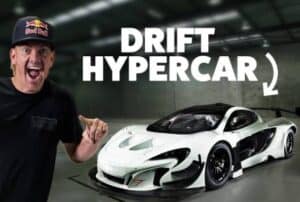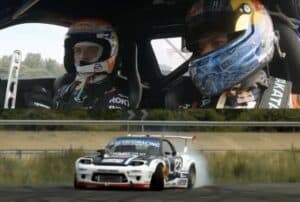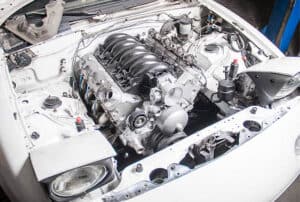Ultimate 13B Rotary Engine Guide
Table of Contents
Mazda’s 13B engine is indisputably one of the most sensational engines ever created. In this guide, we’ll be exploring everything you could need to know about the JDM legend.
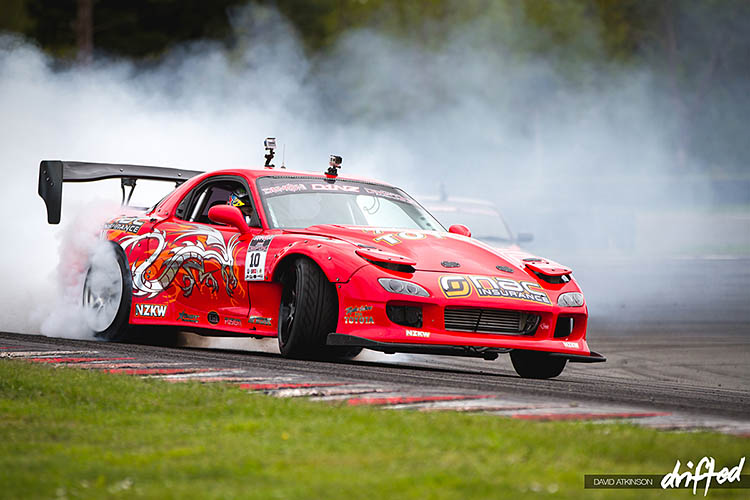
- Introduction
- 13B History
- 13B Engine Specs
- How Does A Rotary Work?
- Pros and Cons
- Tuning Potential
- Common Issues & Reliability
- Crazy 13B Swaps
- Conclusion
12B Engine Introduction
The 13B rotary engine is one of the most incredible feats of modern engineering, with Mazda staying loyal to the masterpiece for over thirty years.
There’s no question that the 13B was at the forefront of Mazda’s rotary loyalty, and we’re going to explore everything you could need to know about the insane powerplant.
Thanks to the rotary’s design, these compact engines can fit into the smallest engine bays and are capable of producing a mighty punch, making them immensely popular with tuners across the globe.
Potentially facing bankruptcy, Mazda took an enormous gamble by launching the first-ever rotary-powered RX to the market in 1978. Since then, it’s gone on to become one of the highest-regarded engine lineups in automotive history.

After reaching America in 1993 under the hood of the jaw-dropping RX-7 FD3S, it was the incredible turbocharged 13B-REW that would become the most sought-after engine in the 13B lineup -immediately overshadowing its predecessors.
Since then, from hot rodders to bikes and even light aircraft – the 13B has found its way into just about anything imaginable.
Despite Mazda opting to cease 13B production in 2012, this hasn’t stopped enthusiasts from continuing to prove what the legendary motor is capable of achieving.
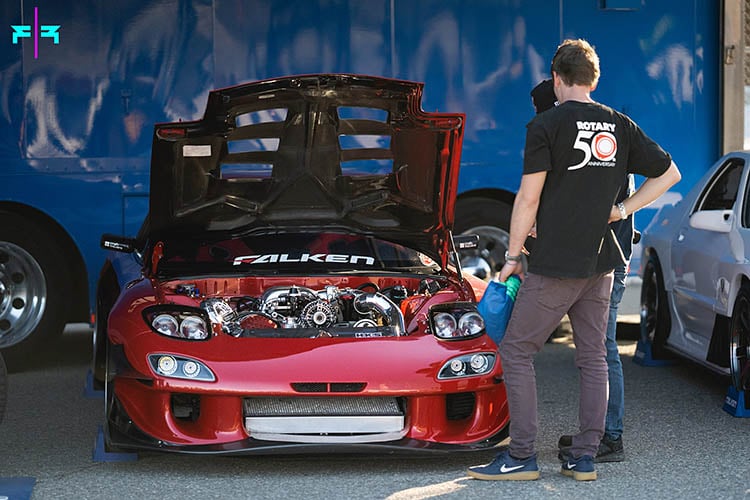
On paper, the 13B is a petrolhead’s dream. Mazda delivered affordability, impressive power, and insane noises into the automotive equivalent of a bikini-clad supermodel to the masses.
Now that the rotary engine has had more than fifty years of revolution, we’re going to take an in-depth look at the ‘BRAP-BRAP’ fire-breather.
Mazda 13B Engine History
Alongside the comparably sensible Miata, Mazda felt they had to add something a little bit crazier into the mix with the RX7 to make it stand out, and with stunning looks and the inclusion of the 13B – it certainly did!
You’d be forgiven for assuming that the initial 13B engine was the predecessor of the 13A, but they bear no real relation.
The 13B bears more similarities to the 12A engine found in the Mazda RX-3. However, the longer 13B benefited from additional displacement from the thicker rotor design, with each chamber displacing 654 ccs, bringing the total capacity to 1,308 ccs (1.3L.)

The success of the impressive 130 horsepower 1,146cc 12A engines was further boosted by Mazda’s ability to provide their customers the privilege of cheaper annual road tax, thanks to the creative possibility of getting the engine under the upper-tier 1.5-liter tax bracket, despite equal performance.
As Mazda built upon the success of the already-popular turbocharged 12A, the game-changing 13B was born. Little did they know at that time, but it would soon become the best-selling rotary engine ever produced.
Here’s where it started.
13B AP
Although many think that the 13B’s origins lie with the RX-7, the far lesser-known Mazda Luce AP (Anti-Pollution) was the first car to take advantage of the first emission-friendly, high-performance 13B in 1973.
The Mazda 13B AP engine can be found in the following cars:
- 1975-1980 Mazda Cosmo AP
- 1974-1977 Mazda REPU (Rotary Engine Pickup)
- 1974-1977 Mazda Parkway
- 1975-1977 Mazda Roadpacer
- 1973-1978 Mazda RX-4
- 1975-1980 Mazda RX-5
13B-RESI
It was the birth of the 13B-RESI (Rotary Engine Super Injection), where the 13B finally got a real opportunity to shine.
The 135-horsepower, 135 lb/ft torque, naturally-aspirated RESI engine featured a two-level intake box, which created a supercharger-style effect, squeezing out additional power by opening and closing intake ports.
Impressively, this multiple-stage intake valve control continued to be implemented through to the final RENESIS engines.
With a 0-50 mph time of 6.3 seconds and improved economy figures over the 12B, the 13B-RESI quickly became the most sought-after rotary engine in the Mazda lineup.
The Mazda 13B-RESI engine can be found in the following cars:
- 1984-1985 Mazda HB Luce
- 1984-1985 Mazda HB Cosmo
- 1984-1985 Mazda FB RX-7 GSL-SE
13B-DEI
Next up was the 13B-DEI engine, which arrived with the second-generation FC3S RX-7 in 1986, as Mazda began to cease production of the 12A engines.
Although the 13B-DEI remained naturally-aspirated, it could push out far more power thanks to four-injector electronic fuel injection alongside improved combustion quality with a revised intake.
With this new fuel-injection system, two injectors provide for the lower rev range. The remaining two supply fuel to the upper rev range, which provides improved economy in typical everyday driving situations.
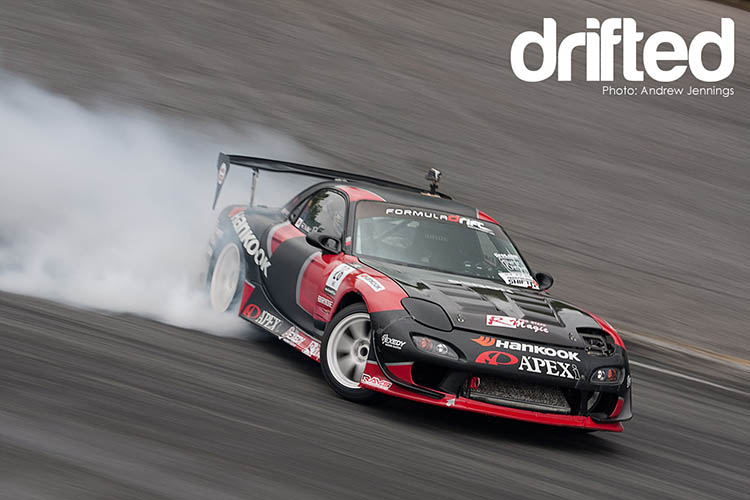
In 1989, a revision of the 13B-DEI came with the new Series 5 FC3S, which featured a higher compression ratio of 9.7:1 and revised rotors alongside further upgrades to the engine management and intake manifold.
The result was a much-improved 160 hp, which was impressive for a naturally aspirated 1.3L engine.
The Mazda 13B-DEI engine can be found in the following cars:
- 1986-1988 Mazda FC3S S4 RX-7 (146 hp)
- 1989-1991 Mazda Series 5 FC3S S5 RX-7 (160 hp)
13B-T
The 13B-T was the first real gamechanger. Although the 160 hp DEI engine was impressive, strapping a turbo to the 13B was the answer to rotary enthusiasts’ prayers.
In 1986, the ability to get 185 hp and 183 lb/ft torque from a 1.3L engine would have been unheard of, and the beloved rotary engine would become more popular than ever before.
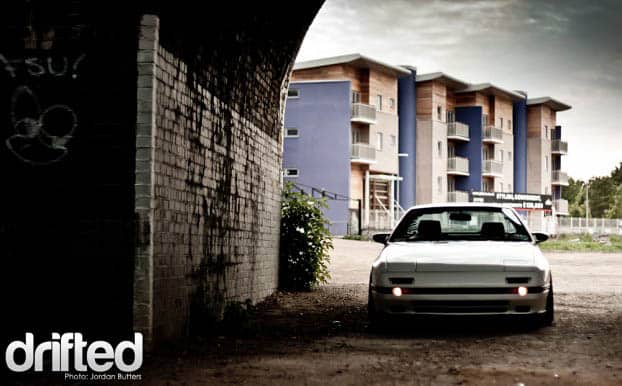
As the later 9.0:1 compression ratio 13B-T engines found in the Series 5 FC3S RX-7 ‘GTX’ model hit the market in 1989, the mind-blowing power figures further increased – 200 hp alongside 195 lb/ft torque.
Keeping with their dual injector format, they opted for the traditional four-port intake, and tuners would soon realize that the 13B-T engine had incredible tuning potential. Many 13B-T’s were soon to be running more than 250 hp.
The Mazda 13B-T engine can be found in the following cars:
- 1986-1991 Mazda HC Luce Turbo-II (185 hp)
- 1986-1988 Mazda FC3S S4 Turbo RX-7 Turbo-II (185 hp)
- 1989-1991 Mazda FC3S S5 Turbo RX-7 Turbo-II (200 hp)
13B-RE
The 13B-RE engine never made its way into the RX-7’s engine bay in factory form, and this was reserved entirely for the top-of-the-range Series JC Eunos Cosmo model.
Although the Eunos Cosmo was known for featuring the 20B-REW engine, they also offered it with an optional 13B-RE variant, which would eventually outsell its 20B-REW sibling.
The 13B-RE featured the largest side ports of any later model engine, including the 13B-REW, alongside more substantial runners on the intake manifold.
Unlike the sequential turbos found on the later-model 13B-REW, these featured a large (HT-15) turbocharger alongside a smaller (HT-10) companion.
Only 5,000 JC Cosmos were ever sold, making the 13B-RE extremely scarce to come by, despite its desirability.
The Mazda 13B-RE engine can only be found in the following car:
- 1990-1995 Eunos Cosmo
13B-REW
The 13B-REW certainly needs no introduction!
Despite its fantastic family tree prior, the REW is the holy grail of 13B engines, found in one of the most popular JDM cars of all time – the Mazda RX7 FD3S.
Straight out of the showroom, the lightweight, high-output 13B-REW was capable of a hugely impressive 255 hp, before later versions would go on to provide a whopping 280 hp – in stock form, from a 1.3L engine!
Unlike the previous models with two different size turbos, Mazda went all-out for this engine, with two gigantic Hitachi HT-12’s.
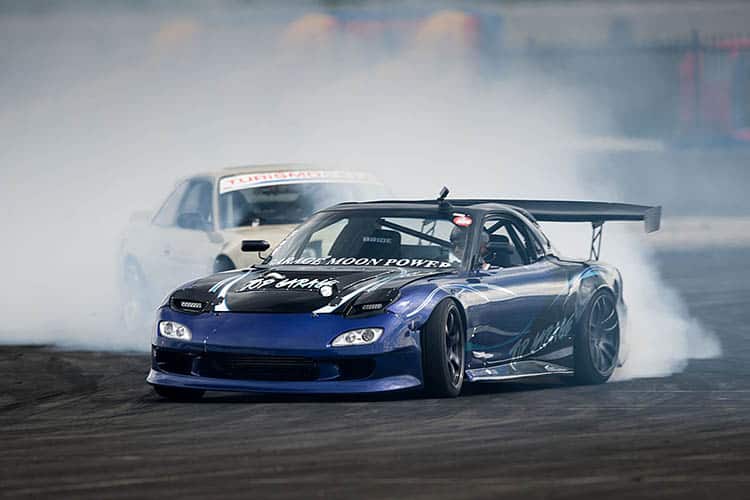
Mazda sought a responsive powerband with minimal lag for the REW engine, opting for the HT-12’s to deliver power sequentially.
The first turbo spools up in the lower end of the rev-range, and the second turbocharger, which up until this point receives minimal gases, later joins the party at around 4,700 rpm.
What’s unusual about the boost delivery is that the initial pressure is 10 psi, before dropping to 8 psi around 4,700 rpm where the second turbo kicks in as they then spool their way back up to 10 psi to the 8,000 rpm redline.
As awesome as the FD3S’ power delivery may be, it certainly takes some getting used to if you’re looking to maximize its potential.
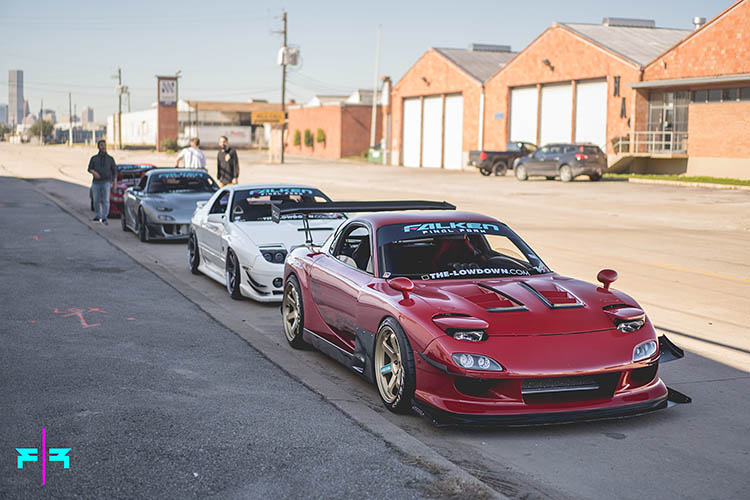
When it came to the powerplant itself, it included hardened apex seals, integrated to handle the higher boost levels, alongside thin cast-iron rotors.
An improved intake and exhaust, lubrication system, a revised engine management system, and ignition timing all help assist the 13B-REW with performing to its full potential.
Models with the 13B-REW
The 13B-REW was an incredible showcase of what the 13B engine was truly capable of. As the engine began to fall into the hands of tuning houses across the world, the four-figure horsepower would soon be established, making it one of the most impressive motors of all time.
The Mazda 13B-REW engine can be found in the following cars:
- 1992-1995 Mazda RX-7 (255 hp)
- 1996-1998 Mazda RX-7 (265 hp)
- 1999-2002 Mazda RX-7 (280 hp)
13B-MSP Renesis
The final engine in the 13B family was also the most advanced, the 13B-MSP (Multi-Side Port) Renesis, which first surfaced in the 2004 Mazda RX-8.
Unsurprisingly by this time, emissions and fuel economy had to be two significant considerations for Mazda, with many manufacturers facing more scrutiny than ever, forcing them to pull the plug on the less efficient engines on the market.
For the Renesis engine, the exhaust ports are located on the side of the housing. The rotors are sealed differently, allowing for more improved power from their original design, alongside reduced fuel consumption and emissions.
Despite being a newer, more advanced engine, the stricter emissions laws and reliability concerns of the rotary motors in daily drivers made for more conservative power output for the final 13B, which is why the REW is typically more desirable.
Unlike the higher-powered REW engines, the various RX-8 models pushed out between 189-238 hp, with 156-163 lb/ft torque.
The Mazda 13B-REW engine can only be found in the following cars:
- 2003-2011 Mazda RX-8 (189-238 hp)
13B Engine Specs
- Manufacturer: Mazda
- Production years: 1973-2011
- Block material: Aluminum
- Engine weight: 330-337 lbs (150-153 kg)
- Displacement: 1,308 cc – 1.3L (79.81 cu in)
- Engine type: Wankel rotary engine with naturally aspirated and turbocharged versions
- Power: 135-280 hp
- Torque: 130-231 lb-ft (180-314 Nm)
- Oil change intervals: 7.5 months or 7500 miles (12,000km) (whichever comes first)
Compression Ratios:
- 9.2:1 – 1974-1978 (Naturally Aspirated)
- 9.4:1 – 1984-1988 (Naturally Aspirated)
- 9.7:1 – 1989-1992 (Naturally Aspirated)
- 8.5:1 – 13B-T 1986-1988 (Turbocharged)
- 9.0:1 – 13B-T 1989-1991 (Turbocharged)
- 9.0:1 – 13B-REW and 13B-RE (Turbocharged)
How Does A Rotary Work?
The 13B has stood the test of time and is undoubtedly one of the most incredible engines ever built. As it reinvented itself over the years, it eventually evolved into the holy grail of 13B’s – the 13B-REW.
Housed in the Mazda RX-7 FD3S from 1992 through to 2002, it was the 13B-REW that immediately took the rotary powerplant to the next level.
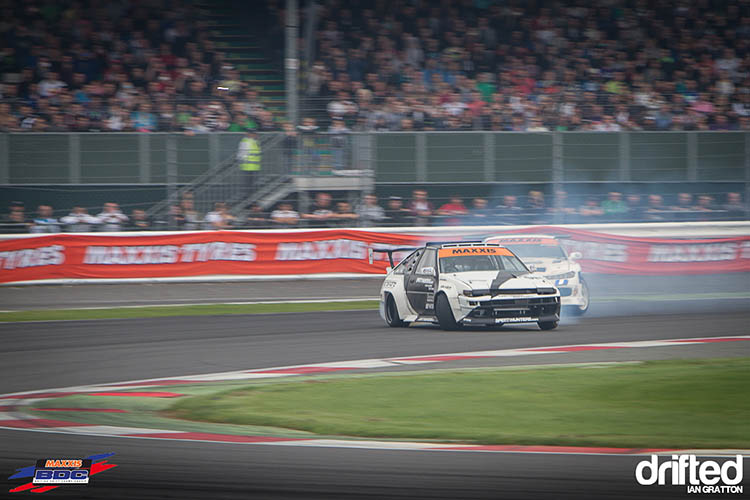
Gone were the valves, pistons, and connecting rods of a typical engine, and in its place was a spinning twin-turbocharged Dorito of destiny.
Initially designed by Felix Wankel in 1951, this incredible engineering feat has been provided with few opportunities in the modern-day automotive world.
Still, Mazda is determined to use it to its full potential.
You need to understand how rotary engines work to appreciate just how amazing yet straightforward they are. However, as you’ve probably guessed, it’s far easier to do so in video than writing, so we’ll let Engineering Explained give a fantastic explanation in this video:

Rotary engines can produce more power than a relative piston-based engine due to combustion occurring twice as frequently. It’s incredibly smooth, and also capable of spinning at far higher revolutions than a camshaft and valve setup.
This allows for a lightweight and compact engine capable of withstanding colossal power to make for the ultimate package.
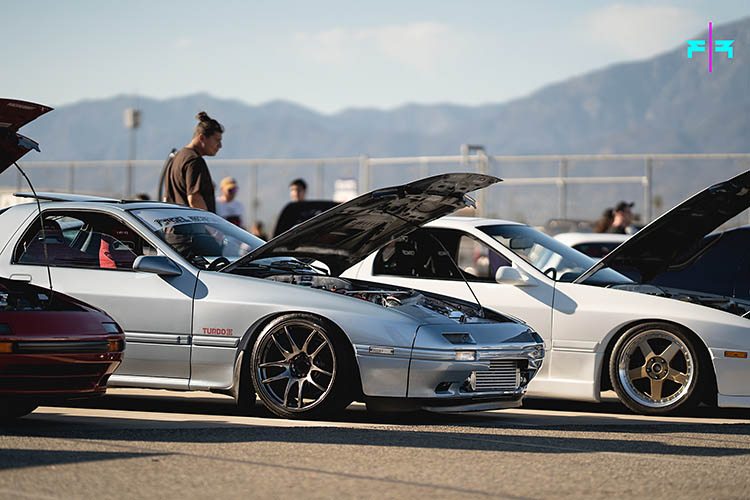
Mazda continued using the rotary engine in their RX-8 and later featured in 2012 during Mazda2 testing, using the rotary technology as a range extender when combined with an electric setup.
Since then, patent drawings have also surfaced, proving that Mazda is still determined to continue with it, but little is known about their intentions. All we know is that there is a small, hard-working team working at Mazda to ensure that they do their best to keep the rotary dream alive.
13B Engine Pros and Cons
As much as we love the 13B, it’s certainly not without its faults, so you’ll need to decide for yourself whether the pros outweigh the cons.
Pros
- High-revving
- Impressive tuning potential
- Lightweight
- Incredibly smooth power delivery
Cons
- Potentially abused engines
- Reliability issues with tuned/badly maintained engines
- Rotary servicing costs
- Potential difficulty with sourcing parts
13B Tuning Potential
When it comes to tuning potential, there are few engines capable of rivaling the 13B.
Although the entire 13B range is capable of significant improvements, it’s the 13B-REW, unsurprisingly, that’s the most impressive.
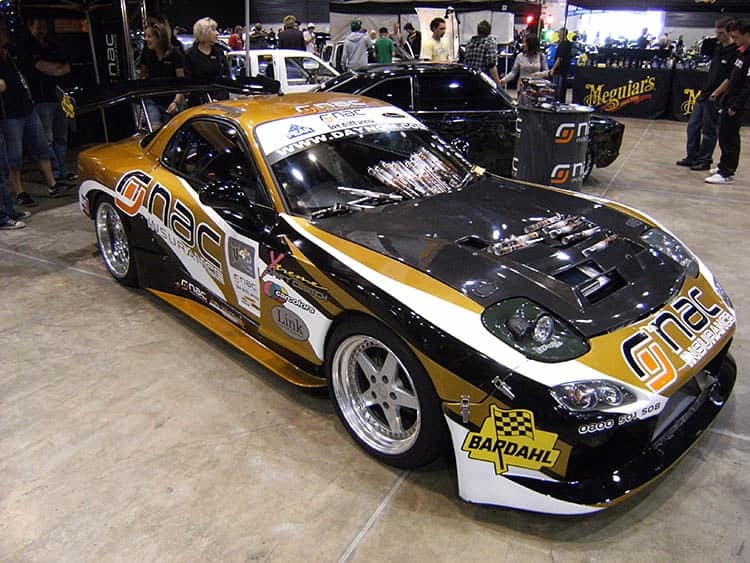
Since rotary engines are known for their impressive upper-rev capabilities, this is where breathing mods are always essential to reduce backpressure and squeeze out a few extra horses in the process.
Bolt-on Mods
Simple bolt-on mods such as a full turbo-back exhaust, high-flow cats (HFC), and downpipes alongside an efficient air filter and intercooler will be a great start to significantly improving the breathability.
ECU Upgrade
Once you’ve got it breathing nicely, you’ll need to consider an aftermarket ECU to compensate for the altered air/fuel ratio, alongside many other additional benefits.
Many owners have managed to up the stock turbos to 15 psi with ECU tuning and supporting mods such as an uprated fuel pump and larger injectors, providing around 350 hp.
Although that might not sound jaw-dropping, it certainly provides a kick in a lightweight chassis such as the FD3S.
Turbo Upgrades
If 350 hp isn’t enough, it’ll be time to explore turbo upgrades, where you can go on to achieve up to 450 hp without suffering too much from turbo lag.
Single Turbo
For many enthusiasts, they’ll also opt-out of the twin-sequential turbo setup complications at this point, instead favoring a single turbo.
A single turbo setup will help keep the temperatures down and potentially provide additional power, depending on the configuration.
As always, there’s a potential downside of a single turbo, and that’s likely to be lag.
Some turbos, such as the GT35, can produce 10 psi at around 3,500 rpm, which isn’t that far off the stock setup.
You’ll also eliminate the weird turbo switch-over of the twins in the process.
However, as always, the bigger the turbo, the more significant the lag, so you’ll need to find the perfect balance. You’re also going to need to factor a new manifold into the budget.

If you decide to go single-turbo, it potentially opens the doors to achieving around 500 hp with supporting upgrades, allowing you to remove the excess vacuum lines and other unsightly additions that come with the twin setup in the process.
You’ll also have additional room in the bay, which gives you more space when working on the car and keeps the high engine temps down, which 13B’s are famed for.
It won’t be cheap, but we’re willing to bet it’ll be worth it!
Of course, if you’ve got the money, then the 13B’s potential is almost endless. How about 1,300 hp and 11,000 rpm – sounds good, right? Wait ’til you hear THIS:

13B Common Issues & Reliability
We’ll be honest – we love the 13B to bits, but it doesn’t come without its potential issues, as with all rotary engines.
Typically, 13B’s are capable of being reliable (stop laughing!) as long as they’re serviced and maintained and the correct intervals.
It’s just that the service and maintenance will need to be carried out a lot more frequently than most engines, and your wallet will feel it every damn time.
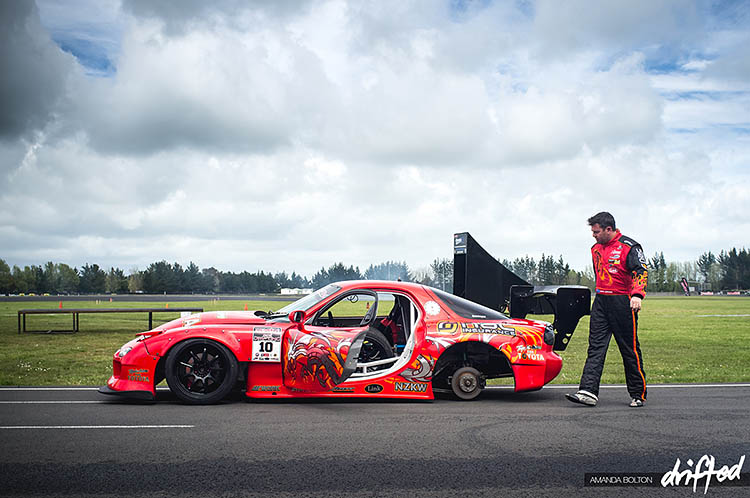
As much as we’d love to have a rotary daily driver, we couldn’t justify the effort that comes with them.
A rotary in a racecar, on the other hand? Perfect.
Rotary engines, by nature, burn a lot of oil, and many unsuspecting potential owners that are copping bargain-priced RX-8‘s are aware of how much maintenance is required. For this reason, junkyards are filling up with RX-8’s.
It’s vital to keep a close eye on oil levels and oil pressure in a rotary engine. Some owners will go as far as to pre-mix oil in with the gas to prolong their spinning dorito ownership with additional lubrication.
Rotary engines are also known for getting hot. With the twin-turbochargers often crammed in the bay, things can usually get a little toastier than you’d like, which is why we believe cooling is essential, and that single turbo setups can be beneficial.
Many 13B owners will change the coolant and thermostat annually using an OEM thermostat to ensure that the temperatures are correctly maintained.
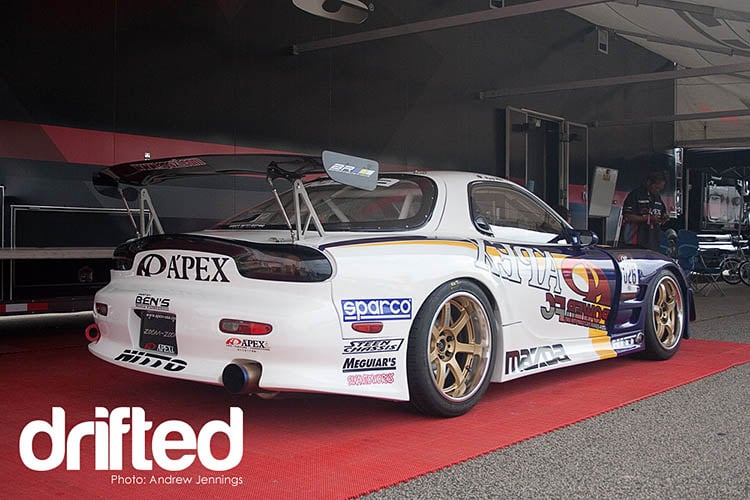
Things to Keep an Eye Out For
When you begin tuning, air/fuel ratios, boost pressure, timing, and fuel flow can be more sensitive than usual piston engines. For these reasons, we always recommend getting the car tuned by a professional is always advised right away, even with bolt-on mods.
Rotary engines are well-known for their fuel consumption. We would recommend running your 13B on the highest quality fuel available, which should be another consideration if you’re planning to use one as a daily driver.
When it comes to the RX-8’s Renesis rotary, it’s known for being made from weaker materials, which can cause it to warp over time. It can also suffer from issues with the apex seals.
RX-8’s often got a bad rep as new owners had no idea what they were getting themselves in for when purchasing these cars as a daily driver and expecting to carry out typical maintenance.
You can use this to your advantage to grab yourself a bargain, but we would tread very carefully when buying a used rotary engine that doesn’t come with a comprehensive service history.
It may be wise to consider budgeting in an engine rebuild if you decide that a 13B will be the ideal choice for your next car to ensure peace of mind and avoid disappointment further down the line.
Crazy 13B Swaps
We couldn’t resist scouring the interwebs for some of our favorite 13B swaps.
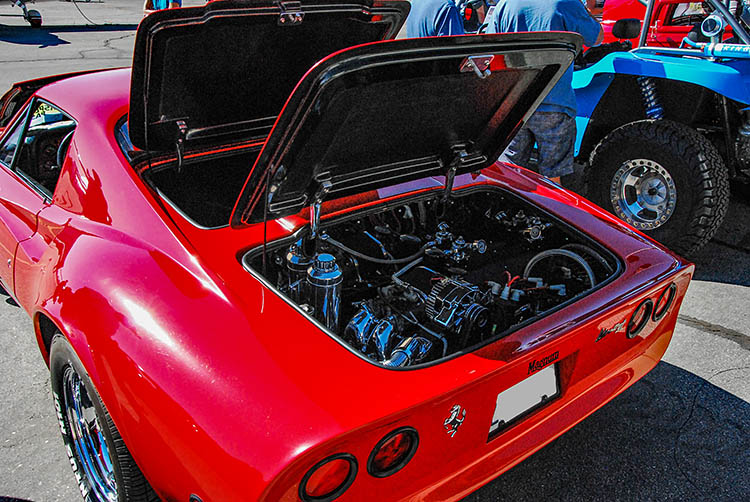
Rotary engines are thankfully a great weapon of choice for race cars, so prepare yourself for some eargasmic rotary action, with some surprises along the way!
13B AE86
The Need For Speed D-Mac 86 never got the track time that it deserved in the drift scene, and despite its short-lived success, it was one of our favorite drift cars of all time. That idle tho!

13B C5 Corvette
Check this video to find out the perfect way to wind up an LS owner!

13B Kei Truck
We adore Kei trucks here at Drifted, and this insane 13B swap is up there with the best.

13B VW Beetle
When you’ve got an unreliable Beetle, what better swap than a 13B? Actually, on second thoughts…

13B Toyota Starlet
Here’s one for our drag racing fans, but we’re willing to bet it’ll appeal to anyone. Is there anything better than watching a 13B-powered 1982 Starlet achieving a 7-second quarter-mile?!

13B Suzuki Samurai
We can’t stop watching this thing – it’s absolutely nuts!

13B Mini
Whenever there’s an engine swap opportunity, you can pretty much guarantee someone out there was crazy enough to fit it to a Mini – this must be absolutely rapid.

13B Drag Bike
It’s not just cars that get treated to 13B swaps.

13B Aircraft
Who says you need to stay on the ground with a 13B? We weren’t kidding when we said there were some surprises in-store!

Conclusion
Although it’s one of the most incredible engines ever built, the 13B isn’t going to be the ideal choice for everyone.
There’s incredible potential waiting to be unlocked from these high-revving engines, and they have the added benefit of sounding far more impressive than the likes of some of the equivalent-power JDM legends such as the 2JZ-GTE and RB26DETT.
If you’re lucky enough to get your hands on a 13B, we would always recommend getting a rebuild and a decent tune to ensure it’s running optimally.
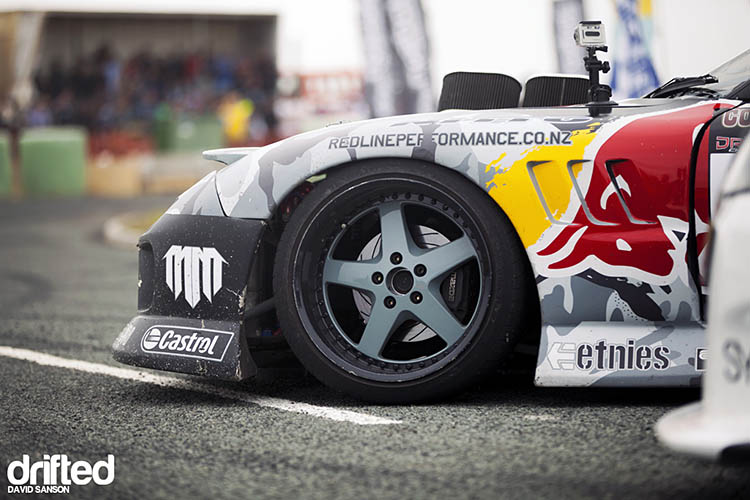
As long as you’ve got a reliable setup and you’re carrying out the correct maintenance procedures, the 13B likely to be trustworthy and reliable.
Would we recommend using a 13B every day? For us – no. But there’s absolutely no doubt that it makes for an incredible weekend, or track/drift engine.
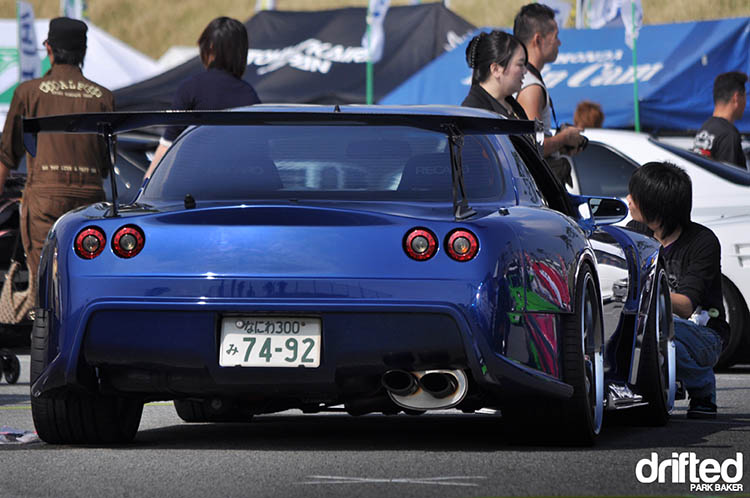
For many hardcore motorsport enthusiasts, the care and attention required by the 13B will be worth the effort. Sure, it’s not the easiest of engines to maintain, but the rewards are undoubtedly worth it once you’ve got an insane rotary screaming in your ears!
So, there we have it! We hope that we’ve covered everything you could want to know about Mazda’s 13B engine in this guide.
Thank you for reading our 13B Engine guide.
If you enjoyed this article, please share it with the buttons at the bottom of your screen. If you’ve found this information useful, then please take a moment to share it with other Mazda and rotary enthusiasts. We appreciate your support.
Photography credits
We thank the following entities for the use of their photography in this article:
Written by:
Published on:

Joe is an avid writer and car enthusiast. When he’s not cruising the streets alongside his friends in his Nissan Silvia S15, he’s drifting on his VR racing simulator.
Joe’s passion for cars is always on display. With a keen eye for detail and a deep understanding of the automotive industry, he hopes his writing conveys his excitement and knowledge of cars and games.
Joe’s work has been featured on many platforms including drivetribe.com, 180sx.club, carthrottle.com, smartdrivinggames.com, smartbikegames.com, databox.com and ceoblognation.com.
When he’s not behind the wheel or at his keyboard, he’s likely daydreaming of his ultimate ride – the legendary Lexus LFA.
Follow Joe on X.

